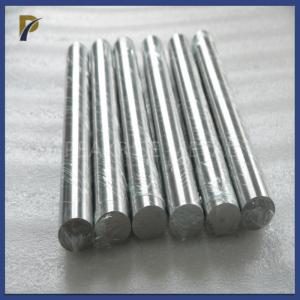

Add to Cart
Forged Molybdenum Lanthanum Alloy Rod Diameter 30mm
1. Description of Forged Molybdenum Lanthanum Alloy Rod Diameter 30mm:
The molybdenum-lanthanum alloy rod is an alloy composed of the base metal molybdenum and the lanthanum trioxide that exists in the matrix as dispersed particles. The La2O3 content in the alloy is generally about 0.4% to 0.7% (mass fraction).
2. Size and Tolerance of Forged Molybdenum Lanthanum Alloy Rod Diameter 30mm:
| Name | Diameter | Tolerance of diameter |
| Forged MoLa rod | >80mm | +/-2.0mm |
| 25mm-80mm | +/-1.0mm | |
| swaging MoLa rod | 10mm-25mm | +/-0.2mm |
| 3.0mm-10mm | +/-0.1mm | |
| Bright MoLa rod | >20mm | +/-0.2mm |
| straighten MoLa rod | 0.5mm-3.0mm | +/-0.03mm |
| Polished MoLa rod | 0.8mm-50mm | +/-0.2mm |
3. Produce craft of Forged Molybdenum Lanthanum Alloy Rod Diameter 30mm:
4. We are able to provide pure molybdenum rods, TZM alloy rods, and tungsten-molybdenum alloy rods in addition to molybdenum-lanthanum alloy rods (high temperature molybdenum rods).
High temperatures don't affect the ductility or high temperature resistance of molybdenum-lanthanum alloy rods. TZM alloy rods have better wear resistance and higher hardness than other molybdenum alloys.
Molybdenum rods generally need to be produced to order, but our company will have a large stock of common specifications such as diameter 5mm----20mm.
Before you order, you can consult us for availability. If there is no stock, the general delivery time of molybdenum rod is 3-7 days.
Shipping of Forged Molybdenum Lanthanum Alloy Rod Diameter 30mm:
5. FAQ:
Q1: What are molybdenum alloy rods used for?
Molybdenum alloy rods are used in a variety of applications such as
aerospace, electronics, automotive, and high-temperature furnaces.
They are valued for their high melting point, excellent thermal and
electrical conductivity, and corrosion resistance.
Q2: What is the advantage of using molybdenum alloy rods over other materials?
Molybdenum alloy rods can withstand extremely high temperatures,
making them suitable for applications that involve intense heat,
such as in furnace components. They also have good mechanical
properties at elevated temperatures and are relatively resistant to
corrosion in many environments.
Q3: What types of molybdenum alloys are available in rod form?
There are several types of molybdenum alloys available, each with
specific properties tailored for different applications. Some
common molybdenum alloys include TZM
(titanium-zirconium-molybdenum) and Mo-La (molybdenum-lanthanum).
These alloys can exhibit improved strength and creep resistance
compared to pure molybdenum.
Q4: Can molybdenum alloy rods be welded?
Yes, molybdenum alloys can be welded using appropriate techniques.
However, the high melting point and heat conductivity of molybdenum
can make welding challenging. Tungsten inert gas (TIG) welding or
similar methods with specialized equipment are commonly used.
Q5: What temperature range can molybdenum alloy rods withstand?
Molybdenum alloys can withstand temperatures ranging from room
temperature up to approximately 2,623 degrees Celsius (4,753
degrees Fahrenheit). This high-temperature capability makes them
suitable for applications in extreme heat environments.
Q6: What are some other common uses of molybdenum alloys?
Aside from rods, molybdenum alloys are used to make components such
as sheets, wires, and foils. They're utilized in manufacturing
light bulbs, electrical contacts, aerospace components, glass
manufacturing equipment, and more.
